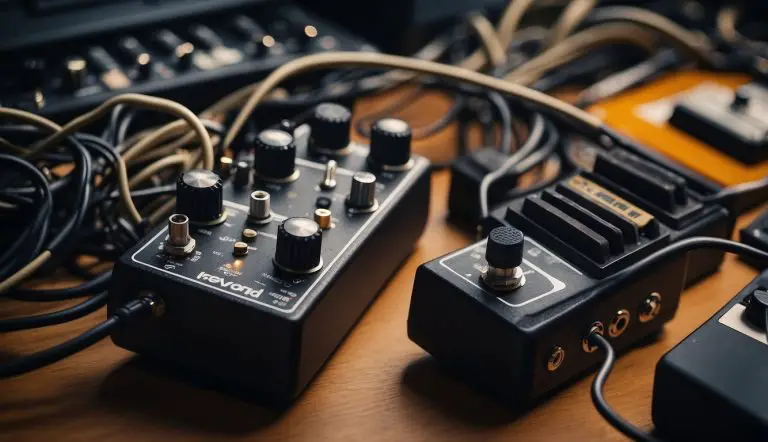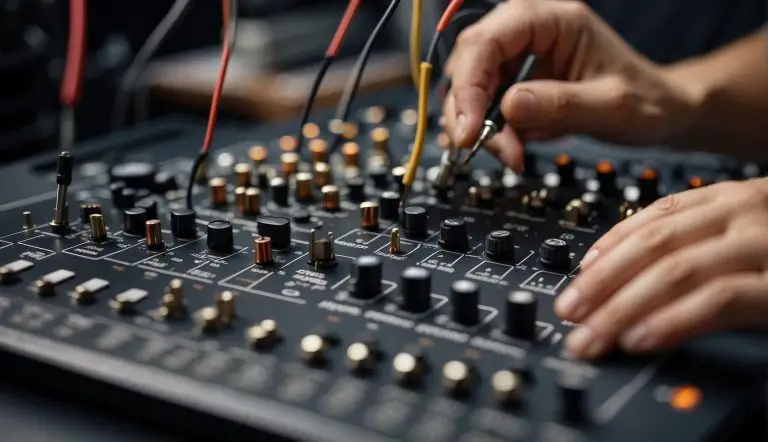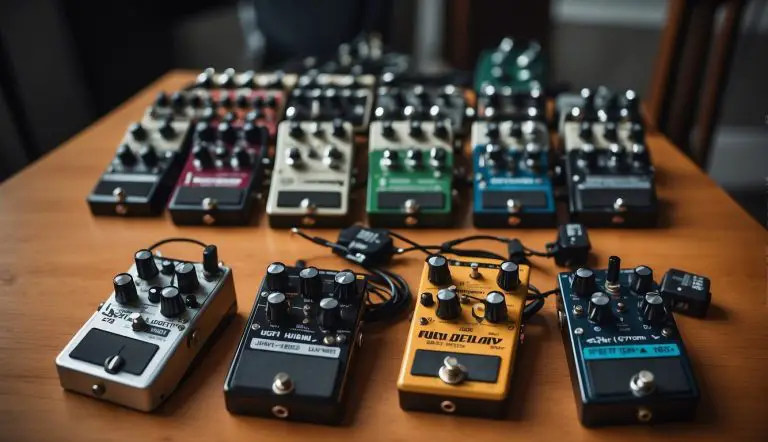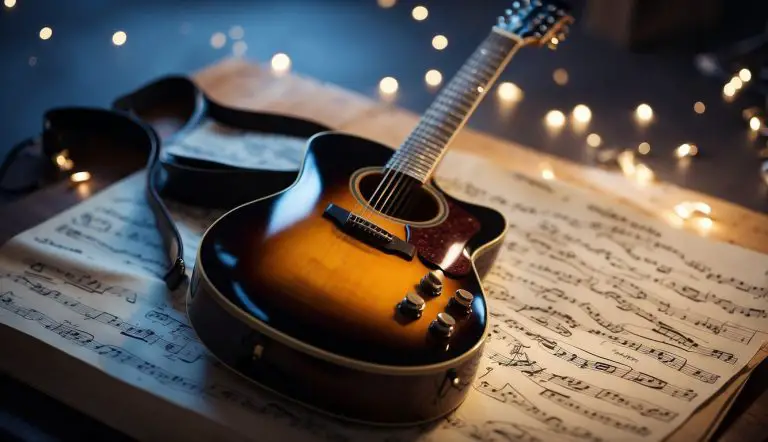What Are The Best Reverb Settings? – Achieving Perfect Ambiance in Your Mixes
Reverb, a misty sound texture, is a crucial element in crafting a track’s atmosphere. As an effect, reverb can envelop a note in echo, suggesting anything from a small room to a vast concert hall.
My experience has taught me that the best reverb settings are the ones that complement the track. They enhance its spatial qualities without muddling the mix.
Getting it right involves understanding how different settings like decay time, pre-delay, and room size interact to create a sense of space around the sound sources.
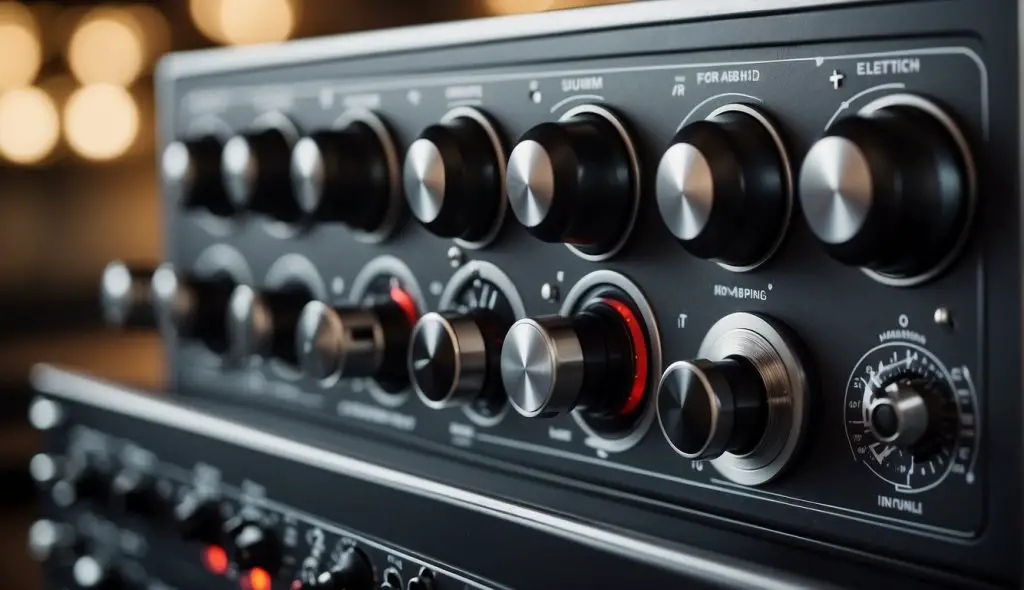
When working with reverb, I always split the context of the track and the role each sound plays within it. For instance, lead vocals might need a different reverb treatment than the snare drum to ensure clarity and presence.
Similarly, a dense mix might require a more subtle use of reverb compared to a sparse, minimalist arrangement where the effect can be more pronounced. I’ve learned that it’s not just about applying reverb, but optimizing its settings to serve the source material.
Key Points
- Reverb adds depth and space to a track, influencing its atmospheric quality.
- The best reverb settings are tailored to enhance the mix without overwhelming it.
- Different sound sources benefit from bespoke reverb treatment to maintain clarity.
Table of Contents
Understanding Reverb Basics
In crafting your soundscape, reverb is a pivotal tool that shapes the space and depth of your mix. It’s essential I touch upon what reverb is and how it can be manipulated for different audio applications.
Types of Reverb and Their Characteristics
Reverb is the persistence of sound after it is produced, as it reflects off surfaces in an environment. These reflections add depth and space to a sound, making it seem more natural or enhancing its character. Some common types of reverb include:
- Hall Reverb: Simulates the expansive sound of a large hall or auditorium. It is characterized by a long decay time and is often used to give a grand, open feel to vocals or orchestral instruments.
- Room Reverb: Used to emulate smaller spaces. It has a shorter decay time compared to hall reverb, adding a sense of intimacy without overwhelming the original sound.
- Plate Reverb: This type emulates the sound of a metal plate vibrating to produce reverberations. Plate reverb usually offers a bright, smooth decay and is popular for vocals in music production.
- Spring Reverb: Generates its effect using a metal spring and is known for its unique, often twangy sound. It’s typically found in guitar amplifiers.
- Chamber Reverb: Originates from sending the sound to an actual chamber or room and recording the natural reflections. Chambers often yield a warm and complex reverb character.
- Cathedral Reverb: Implies a very large, expansive space with a long decay, similar to what one would experience in a large church or cathedral.
- Convolution Reverb: Uses impulse responses to simulate actual spaces; it creates highly realistic environmental simulations.
Core Components of Reverb Settings
When I begin to adjust reverb settings, it’s vital to understand the core components that define the reverb’s character:
- Pre-Delay: The time between the produced dry signal and the onset of the reverberation. A longer pre-delay can separate the original sound from the reverb effect, making the sound more pronounced.
- Decay Time: How long it takes for the reverb to reduce to inaudibility after it’s initiated. In music production, the tempo of the track can often dictate the appropriate decay time.
- Reflections: These are the early echoes that hit your ears before the full effect of the reverb. They define the perceived size of the space.
- Room Size: Or the simulation thereof, affects the density and the timing of the reflections.
- Dry/Wet Signal: The balance between the unaffected signal and the processed (reverb-laden) signal.
- Width: Controls the stereo spread of the reverb. A wider width can give a sense of larger space.
- Depth: Essentially how far back in the mix the reverb places the sound. A greater depth can make the sound seem distant.
- Filters: High pass and low pass filters can be used to shape the frequency content of the reverberated sound, with high pass filters cutting low frequencies and low pass doing the opposite.
In applying reverb to a mix, it’s also crucial to consider equalization (EQing) to avoid muddiness and compression to ensure that the level of reverb remains consistent throughout.
With these tools and an understanding of different reverb algorithms, I can create a myriad of aural landscapes. I can make anything from intimate vocal settings to lush, expansive instrumental backdrops.
Optimizing Reverb for Different Sound Sources
When I’m mixing, my goal is always to achieve a perfect balance where the reverb enhances the mood without overwhelming the clarity. Depending on whether I’m working with vocals, instruments, or drums, the type and amount of reverb need to be carefully adjusted.
Tailoring Reverb for Vocals
For vocals, I focus on achieving a sound that’s rich with emotion yet sits well in the mix. For lead vocals, a reverb with a moderate amount and a shorter pre-delay can make them stand out without getting lost. My cheat sheet for vocal reverb typically looks something like this:
- Type: Plate reverb is my go-to for that classic, smooth sound.
- Stereo Width: Moderate width for lead to maintain focus, wider for background vocals to enhance the spread.
- Pre-delay: 20-30ms to keep the vocal in front, adding a sense of distance.
- Decay: Usually between 1.2 and 1.8 seconds, but I’ll adjust based on the room size I’m after.
For background vocals, I often go with a slightly longer pre-delay and lower mix level to create separation from the lead vocal.
Adjusting Reverb for Instruments and Drums
With instruments, the type of reverb I select really depends on the sound I’m after:
- Guitar: A hall reverb for spaciousness or a spring reverb for a vintage vibe. I keep the decay time moderate and sometimes add a touch of pre-delay.
- Piano: A room or hall reverb can be used to simulate a natural space, with the mix control dialed in to achieve a balance where the reverb supports rather than drowns the piano.
For drums, particularly the snare and toms, I favor a plate or room reverb to give it presence without muddying the rhythm section. I set the reverb to be mono or narrow stereo to maintain punch and focus. Here’s my drum reverb approach in a nutshell:
- Snare: Short reverb tail around 1 second, with a small amount of pre-delay to avoid flamming with the dry hit.
- Kick: Often I’ll keep it dry, but if reverb is necessary, I opt for a subtle, tight room reverb.
- Toms: Similar to the snare, but I’ll sometimes allow for a slightly longer decay for tonal richness.
Experimentation is key, as is using reverb plugins like convolution for realistic spaces, or algorithmic for more modulated effects. Inserts allow me to apply reverb directly to the track, giving me fine-tuned mix control.
For overall dynamics, I’ll often use multiple reverbs with different settings to create a layered and diffused effect.
Frequently Asked Questions
In this section, I’ll cover some of the most common inquiries about reverb settings to help you refine your mixes.
How can I optimize reverb settings for vocal recordings?
For vocal recordings, clarity is key, so I typically use a shorter decay time and lower wetness level. This prevents the vocals from getting lost or sounding distant.
What are the ideal reverb settings when mixing guitar tracks?
When mixing guitar tracks, I often find that a moderate reverb decay with a pre-delay of around 30ms helps the guitar sit well in the mix without overwhelming other elements.
How does reverb frequency affect the sound, and what settings should I use?
The frequency of the reverb tail can truly shape your sound. For a warmer feel, I roll off the high frequencies using a low-pass filter, and for brightness, I ensure the higher frequencies are present without harshness.
What techniques can I use to improve the quality of reverb in my mixes?
One technique I use is to EQ the reverb send to avoid muddiness. For instance, I might apply a high-pass filter to remove low-frequency rumble from the reverb effect.
Can you explain the three-reverb trick and how to use it effectively?
Certainly! The three-reverb trick involves using three different types of reverb—small, medium, and large—to create depth. I balance them carefully to add dimension without causing clutter.
What are the best practices for setting reverb parameters in Audacity for a clean mix?
In Audacity, I adjust the reverb parameters like room size and decay time to match the context of the track. Then, I listen critically and adjust the dry/wet balance for a seamless blend.


